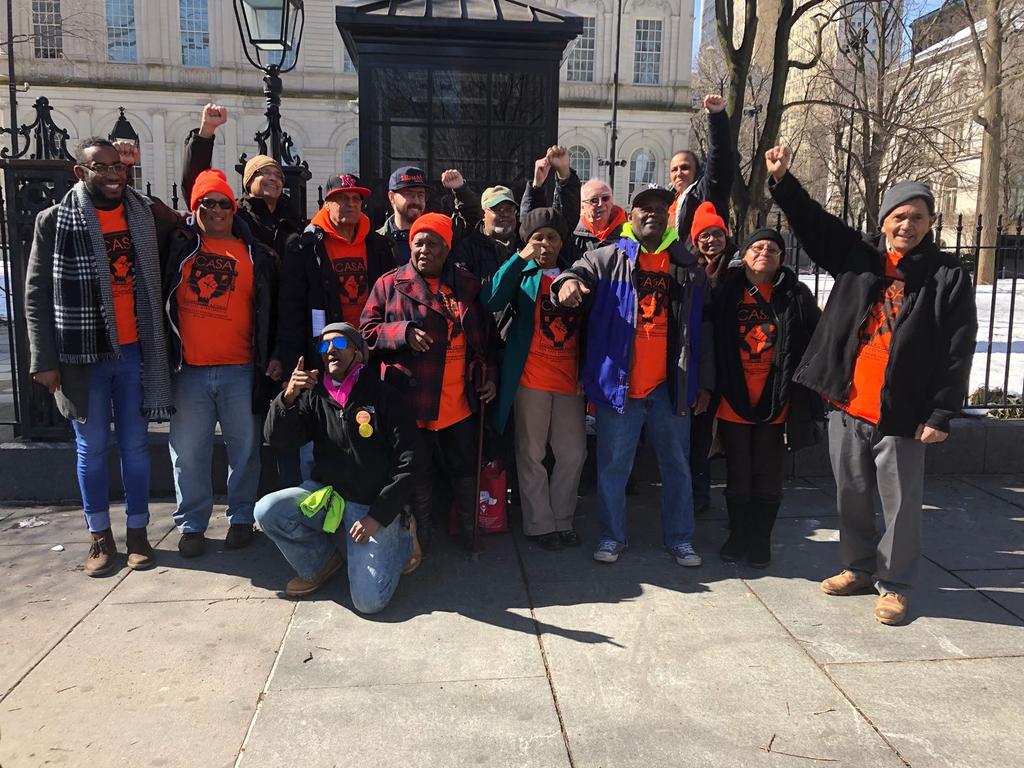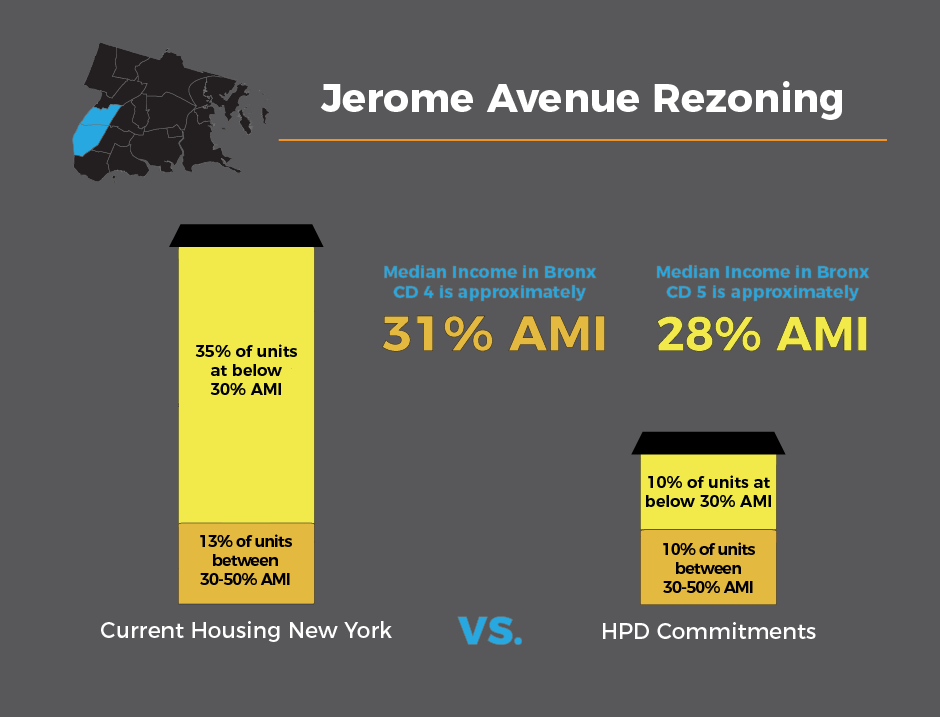Community Power and the Jerome Avenue Rezoning

The Jerome Avenue rezoning passed the City Council at the end of March, despite widespread community opposition to the very end. 92 blocks of Jerome Avenue and some cross streets have now been rezoned from primarily auto uses and manufacturing to high density residential districts. In addition, the de Blasio administration and City Council have shared a list of commitments secured for the neighborhood as part of the rezoning.
So what does this all mean about the impact of community engagement on the rezoning process? There’s no single correct assessment. After years of engagement around the rezoning, every member of the Bronx Coalition for a Community Vision will have their own understanding of the balance between what was won and lost. The tradeoffs in the final Jerome Avenue deal can make community organizations feel that a real victory is elusive.
But, the Bronx Coalition for a Community Vision had a major impact and has much to be proud of. Within a land use system that too often disenfranchises lower income communities – especially communities of color – the Bronx Coalition built an incredible amount of power for, and within, their neighborhoods. They did this by bringing together a broad coalition of tenants, small business owners, union members, and faith leaders truly representative of the Bronx. Through the strength of community organizing and the commitment of these engaged members, the Bronx Coalition is directly responsible for a host of historic victories, many of them years in the making; many of them deemed impossible when they were first proposed. Despite the frustrations and limitations of organizing around a rezoning, it seems important that these victories are acknowledged and celebrated.
These include two major new citywide policies that have the potential to significantly reduce the harassment and displacement of tenants – a Right to Counsel that ensures low-income people have a right to legal representation when facing eviction, and the Certificate of No Harassment pilot that requires landlords to prove they haven’t harassed tenants before they can receive major building permits. While both of these were large efforts by organizations from throughout the City, neither would likely have succeeded last year without the Coalition’s efforts.
On the local level, the Coalition’s organizing helped win a host of important commitments, including:
- The creation of 2 new schools for the overcrowded district
- Dedicated funding to help businesses in the rezoning area relocate
- The creation of a Local Hiring and Responsible Contracting Working Group
- Inclusion of the Jerome neighborhood in HPD’s Partners in Preservation pilot program, including the creation of an inventory of local affordable housing units that the Coalition long called for
All of these commitments and polices will require continued organizing and engagement to achieve their full potential – this is where the power the Bronx Coalition has built will continue to be brought to bear.
Still, at the end of the day, the rezoning passed with core community demands around jobs and affordable housing development left unresolved, and the Bronx Coalition still firmly in opposition. In the coming years, it is likely that primarily market-rate housing will be built where the auto-shops and businesses of Jerome Avenue now stand. This may make it difficult to celebrate the very real victories the Bronx Coalition did achieve. There is much that remains to be done to change the way land use decisions are made in our city, but the power the Bronx Coalition built through the strength of its organizing is an essential component – perhaps the essential component – to continue and eventually win this fight. The strength and solidarity of the Bronx Coalition, in and of itself, is an important victory and should be celebrated.
Christopher Walters, ANHD’s Rezoning Technical Assistance Coordinator
 ANHD 2016 Building the Community Development Movement
ANHD 2016 Building the Community Development Movement


